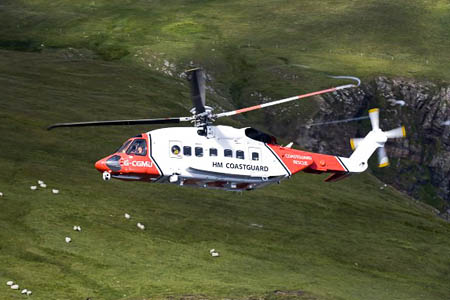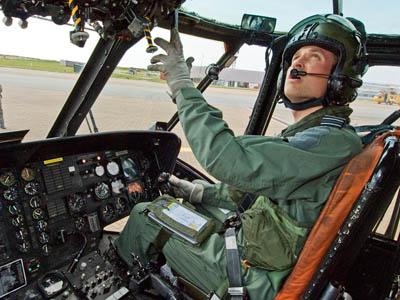The Government is due to announce which company has won the contract to provide search and rescue helicopters in the UK.
The statement will signal the end of military crews’ involvement in mountain rescue and other emergency services that has a 70-year history.
Texas-based Bristow Group is being touted as the likely winner of the multi-million pound contract to provide search and rescue helicopters which provide vital support to the UK’s voluntary mountain rescue teams.
The Coastguard search and rescue helicopter service is already privatised, but the yellow RAF Sea Kings and their grey and red Royal Navy counterparts are due to be taken out of service in 2016.
Prince William is a search and rescue helicopter commander based with 22 Squadron at RAF Valley on Anglesey.
Sikorsky S92s will join AgustaWestland’s brand-new 189 helicopters in providing the service.
Military helicopter pilots have performed heroic flying missions to pluck stricken climbers and walkers from Britain’s mountains.
Last week Royal Navy Sea King pilot Lieutenant Commander Craig Sweeney was awarded the Air Force Cross for his piloting of his aircraft during the rescue of Dr Gareth Bradley on Beinn Sgulaird.
And the HMS Gannet crews have flown 10 separate missions in two days to help the public caught in blizzards in western Scotland, Arran and Northern Ireland.
It is not clear who will crew the privatised helicopters.


Jim Fraser
26 March 2013Same boys and girls up front holding the two levers. Different pay clerk, different colour flying suit. They will have to handle 4000 or 5000 shaft horsepower and modern avionics. What's not to like?
Steven
26 March 2013Still not comfortable with SAR being privatised but there does look to the untrained eye to be some advantages, new helicopters for one and as an ex resident of south wales a SAR at St Athen instead of Chivnor has a lot going for it in reduced flying times and less channel based issues.
Agree that the flying crews will more than likely be ex forces much like they seem to be in the air ambulances. That is reassuring at least.
Margaret
26 March 2013"What is not to like?"
A valuable 'visual presence' of our military services will be lost.
Jim Fraser
26 March 2013"A valuable 'visual presence' of our military services will be lost."
No escort destroyers have been ordered. Watch out for the alternative. 'Si vis pacem, para bellum' ;-)
Margaret
26 March 2013I fear you miss the point, despite your 'modern avionics'!
Niall
27 March 2013I'm not sure this article is accurate. My understanding of the agreement is that the aircrews WILL BE provided by the RAF & RN as it allows them to use the SAR missions as valuable training time.
Ian
27 March 2013Niall, an interesting bit of information that I hadn't seen before.
Margaret, I think I get the point - if the Government was prepared to fund the new aircraft the current arrangement could continue; always remembering that it was the RAF who created the whole thing.
I wonder what type of 'car' the Whirlybird Geek drives?
Jim Fraser
28 March 2013The arrangement where both civilian and military pilots flew the aircraft was for the previous competition that was scrapped in early 2011 because of inappropriate bidder behaviour. In this new competition, conceived at a time of considerable deployment obligations on the military, no military element is included. What does exist is a commitment from the customer, contractor and MoD to provide a managed path for mil SAR crews to continue their SAR careers in the same vicinity but a different colour flying suit.
A good solution has been obtained at a good price. However, at implementation commencement in 2015, it will start to appear farcical as helicopters return from Afghanistan with nothing to do and the Navy are well on the way to tooling up for carrier SAR again.
I have no question over the competence of the chosen contractor and no question over the commitment of the regulator. The route to get us here has been far too tortuous through limited competence in civil service procurement and bad political decision making. Handing it to a department and its agency whose heart is not really in it (DfT is British Rail by another name) and whose skills are not a good fit for 70% of the task are the weakest aspects of the entire project.
La oss ga flyr.
Margaret
29 March 2013Interesting points.
Back in the 1960s, if someone at the Department of Transport had had the foresight to keep the tracks of the closed rail lines under basic maintenance for a decade or so, instead of selling them off, we might be in a better position now. Yes I know, they probably wanted the cash.